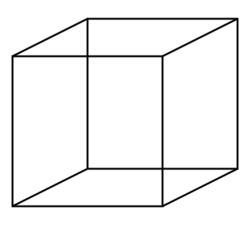Solve this cube if you can!
 Positive integers are written on all faces of a cube, one on each. At each corner of the cube, the product of the numbers on the faces that meet at the corner is written. The sum of the numbers written at all the corners is
2
0
0
4
. If
T
denotes the sum of the numbers on all faces, find the sum of all possible values of
T
.
Positive integers are written on all faces of a cube, one on each. At each corner of the cube, the product of the numbers on the faces that meet at the corner is written. The sum of the numbers written at all the corners is
2
0
0
4
. If
T
denotes the sum of the numbers on all faces, find the sum of all possible values of
T
.
The answer is 1193.
This section requires Javascript.
You are seeing this because something didn't load right. We suggest you, (a) try
refreshing the page, (b) enabling javascript if it is disabled on your browser and,
finally, (c)
loading the
non-javascript version of this page
. We're sorry about the hassle.
2 solutions
awesome!! +1 for the factorization part!! :D :D
Log in to reply
Factorization is even more than simple! But the further continuation is boring and confusing!!!
I didn't notice the 505 case :/ I entered 688
I have seen this somewhere else also.
Log in to reply
It was appeared in INMO
Log in to reply
I think it was in RMO-2004.
"Positive integers are written on all faces of a cube, one on each"
I forgot case 1 :(
you missed one factors: 1 x 1002 x 2 so the sum is 1193 + (1 + 1002 + 2) = 2198.
Log in to reply
actually its still 1193 because what ur saying is that the sum of 2 positive integers would be 1, because it is the sum of 2 sides
brilliant!!!! wow!!!
I did it exactly in the same way
y not the 3 factors be 1-2-1002, 1-1-2004, 1-3-668 etc .. its given only positive numbers .... not numbers greater than 1 ... I considered the number ONE also and got 6 more possibilies and hence got answer as 5903 .....
AWAITING UR GUD REPLY BROTHER
Log in to reply
x+x' , y+y', or z+z' must sum to each of the factors. In the case of x+x' = 1, that indicates that the value x = 0 and x' = 1, or vice versa. Since x cannot equal zero, as it must be a positive integer, we cannot include 1 in our factorization of 2004.
Let's have a brute force solution:
1 2 3 4 5 6 7 8 9 10 11 12 13 14 15 16 17 18 19 20 21 22 23 24 25 26 27 28 29 30 31 32 33 34 35 36 37 38 39 |
|
Answer: 1 1 9 3
I really like this problem, so lets write a solution. To start, lets label each side. To make things simple, I will call one side x, and the side opposite to it x', another side y and its opposite y', and the last two sides z and z'. This can be done in any fashion, because if you look closely, it does not affect the outcome of the products. We are told that the vertices where the sides of the cube meet are equal to the product of the numbers on each of the sides, and that the sum of all the vertices is 2004. Thus with a little work it can be shown that:
x y z + x y z ′ + x y ′ z ′ + x y ′ z + x ′ y ′ z ′ + x ′ y ′ z + x ′ y z ′ + x ′ y z = 2 0 0 4
With a little factorization, it can be shown that:
( x + x ′ ) ( y + y ′ ) ( z + z ′ ) = 2 0 0 4
Now, the prime factorization of 2004 is 2 2 ⋅ 3 ⋅ 1 6 7
Now that we have the prime factorization, and we know that we need three factors, i.e. (x+x'), (y+y'), and (z+z'), we can solve for all possible factorizations with three numbers. These factorizations are as follow:
4 ⋅ 3 ⋅ 1 6 7 2 ⋅ 6 ⋅ 1 6 7 2 ⋅ 3 ⋅ 3 3 4 2 ⋅ 2 ⋅ 5 0 1
x+x' , y+y', or z+z' must sum to each of the factors. In the case of x+x' = 1, that indicates that the value x = 0 and x' = 1, or vice versa. Since x cannot equal zero, as it must be a positive integer, we cannot include 1 in our factorization of 2004.
Now the question asks for the sum of all the sides as T, and then the sum of all possible values of T. Since we now have all the possible factorizations of 2004 with three terms, all that is left is to check that the sum of each factorization is unique, which I can assure you is the case, and then sum all of the sums. Thus:
( 4 + 3 + 1 6 7 ) + ( 2 + 6 + 1 6 7 ) + ( 2 + 3 + 3 3 4 ) + ( 2 + 2 + 5 0 1 ) = ∑ T
1 7 4 + 1 7 5 + 3 3 9 + 5 0 5 = 1 1 9 3